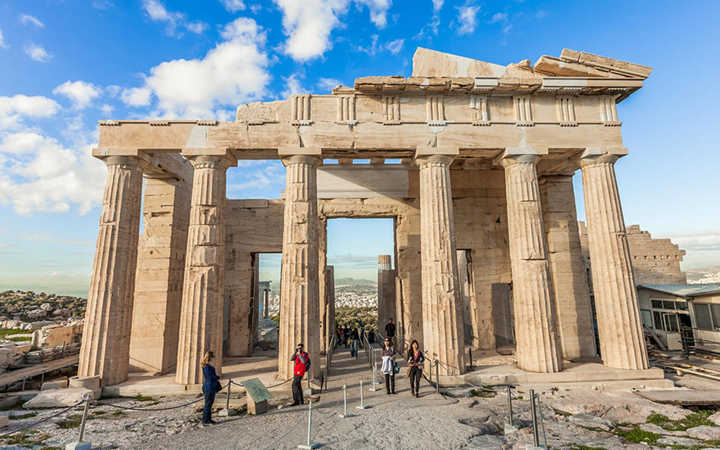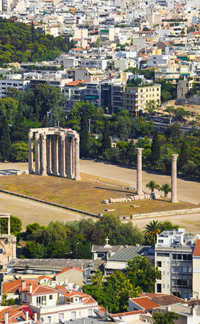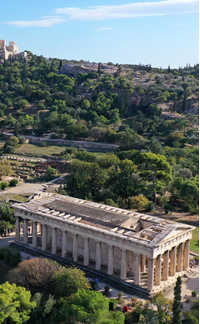Standing proudly at the western edge of the Acropolis, the Propylaea serves not only as the monumental entrance to the sacred hill but also as a powerful symbol of Classical Athens’ architectural brilliance and civic pride. Though often overshadowed by the nearby Parthenon, the Propylaea is a masterpiece in its own right — offering visitors their first awe-inspiring encounter with the heart of ancient Athenian glory.
A Monumental Gateway
Constructed between 437 and 432 BCE under the direction of the architect Mnesicles, the Propylaea was designed as a grand vestibule to impress those ascending the Acropolis. It replaced earlier, simpler gateways and marked a significant shift in how Athenians showcased their religious and cultural identity.
The Propylaea consists of a central hall with a marble roof supported by towering Doric columns, flanked by two wings of unequal size. The north wing likely served cultural purposes, possibly housing a gallery or display area, while the smaller south wing may have had religious or ceremonial uses. The central passageway was broad enough to accommodate both pedestrian and chariot traffic during religious festivals like the Panathenaia.
Architectural Ingenuity
What makes the Propylaea exceptional is the way Mnesicles skillfully adapted the structure to the steep, uneven terrain of the Acropolis' entrance. The building combines Doric and Ionic elements in an unusually harmonious way — something not commonly seen in Greek temple architecture of the time.
Despite its unfinished state (due to the outbreak of the Peloponnesian War), the Propylaea exudes a timeless elegance. The surviving marble beams — some weighing over 100 tons — are among the largest used in ancient construction, highlighting the Athenians’ ambition and technical skill.
More Than Just a Passage
The Propylaea was more than a physical gateway. It represented the transition from the secular world of the city to the sacred realm of the gods. As such, it played a symbolic role in preparing visitors — citizens, pilgrims, and foreign dignitaries — for the spiritual and cultural experience atop the Acropolis.
Today, walking through the Propylaea is like stepping back into ancient history. The views of Athens from this spot are breathtaking, especially at sunset when the marble glows golden against the Athenian sky.
Visitor Tips
Location: Western entrance of the Acropolis, Athens
Photo tip: Best light for photos is early morning or late afternoon
Opening Hours: Follows Acropolis schedule (typically 8:00 - 19:00 in summer)
Entry: Included in the standard Acropolis ticket (€30 in high season, €15 in low season)
Whether you're an architecture enthusiast, a history lover, or a curious traveler, the Propylaea is a striking prelude to the wonders of the Acropolis — a monument where form meets function in pure marble majesty.


















